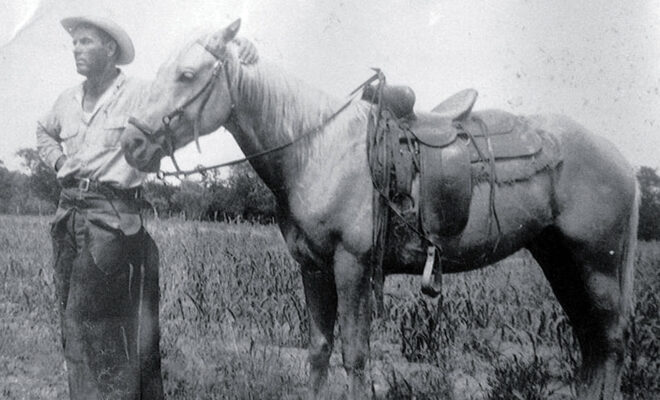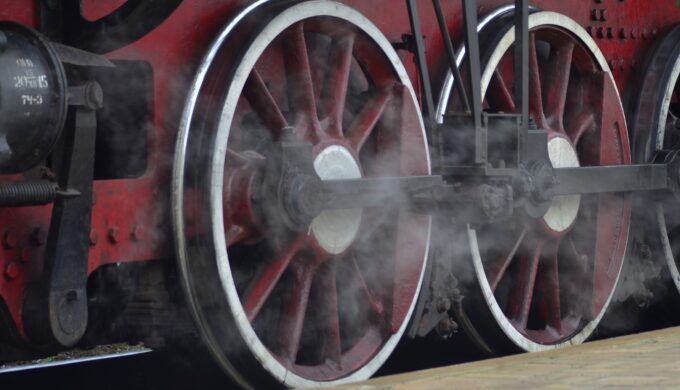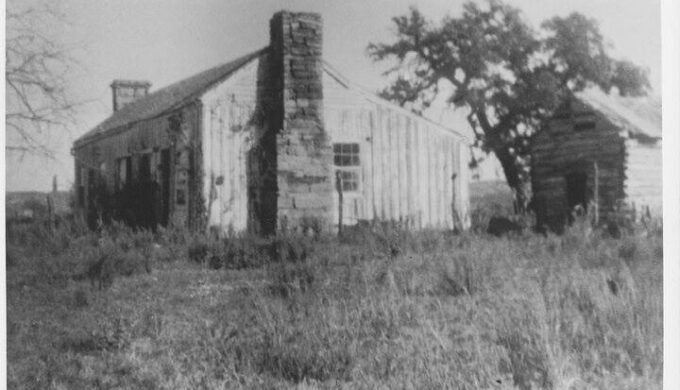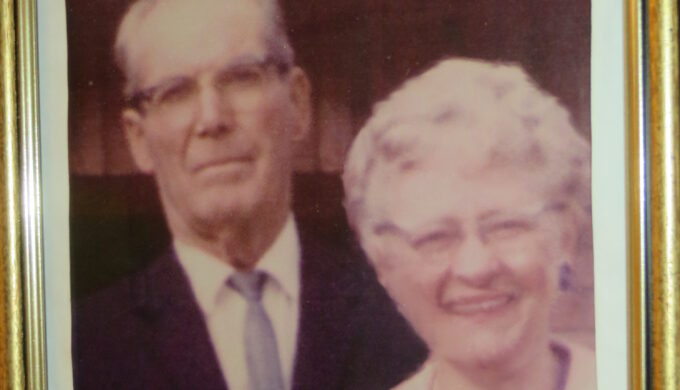Photo: The old ranch house at Shirley Williams’ Colorado River ranch, later renovated as a family gathering place on the scenic property near the lake.
Sometime during their stay in Llano, Shirley inherited a large ranch along the west bank of the Colorado River, just north of Kingsland. He enjoyed ranching and working with his land and began to spend more and more time there. Eventually, he moved the family back to Kingsland.
And that is when “the ship came in” for Shirley and Ellen Williams.
In 1948, the Lower Colorado River Authority (LCRA) began construction on the new Granite Shoals Dam (now Alvin Wirtz Dam), and the Shirley Williams Ranch turned into three-and-a-half miles of prime lakefront property. Shirley didn’t quit working, but he never again had to worry about “chopping cotton” to earn his living. For the next 25 years, he indulged his active imagination, ran his business the way he wanted to, showed kindness to neighbors and strangers, and helped shape a burgeoning community around the tiny village where he had grown up.
One of his ideas may have been a little ahead of its time; way back in 1959, he built the Shirley Williams Airport on part of his ranch. He envisioned a place where airplane owners could live between the runway and the lake, enjoying easy access to his still-secluded lakeside paradise. An article in The Llano News said, “The landing strip has been so placed that a lot owner can land and taxi his plane directly onto his waterfront homesite.” It was years before he sold the first lot there, and it has been only recently that the idea has really seemed to catch on.
Shirley’s grandson, local contractor Danny Williams, recalled a firm but loving grandfather and a relaxed sort of businessman who sold lots for next-to-nothing down without any kind of contract. “His pickup was his office; he’d make a handshake deal for a lakefront lot, pound sticks into the ground to mark it, and write the terms in his ledger. Every month, he’d drive around and collect payments.”
Of course, not everything went exactly as planned. While moving dirt on a lakefront lot in 1960 with his Caterpillar D-6 bulldozer, he accidentally slid down an incline into the lake. He was able to extricate himself and swim to safety, but his bulldozer settled under 18 feet of water. The retrieval of the bulldozer made news all around Texas (and even in a national sporting magazine) as “the largest yellow cat ever pulled out of Granite Shoals Lake.”
According to another grandson, Dee Williams, “He was taxiing an airplane, and made a turn too close to a mesquite tree. He only dinged the wingtip, but when he attempted to get back on the airstrip, he hit the same tree with the rear (the elevator). The wings and empennage were only slightly damaged. I think it was enough to require an A&P mechanic and inspection, but the wings were intact.”
In 1961, Shirley Williams served as chairman of the North Colorado River Road Improvement Association, raising money to pave the road from FM 1431 to his ranch (it eventually became RR 2545, extending to the Lakewood Forest III subdivision).
In 1962, he donated land near the entrance of his ranch to build an American Legion hall, a building which became the venue for many community events and the headquarters for one of the largest American Legion chapters in the state. Throughout the ‘60s, he and Ellen remained very active in community affairs, even as he continued ranching and selling lots. His standard ad in The Llano News offered “Waterfront Lots on Granite Shoals Lake and Registered Angus Cattle.” He continued to refer to the lake as “Granite Shoals,” long after the name had been officially changed to “Lake Lyndon B. Johnson” in 1965. The ads ran consistently until the Fall of 1975.
Shirley Williams died, after a short illness, on March 4, 1976. His funeral was reportedly the largest in Kingsland’s history. He and Ellen left a rich legacy; many of their descendants live in and around Kingsland, their names are on area maps and street signs, and many of the effects of their hard work and imagination will live on through Kingsland’s history. Perhaps the most fitting tribute came from the American Legion in March of 1974, when Shirley and Ellen Williams were honored with a gold plaque. The report in The Llano News says, “They deserve the best for making this organization possible” and adds, “They are real examples of the TRUE AMERICAN TYPE OF PEOPLE.”
Read chapter one here, chapter two here, and chapter three here.







